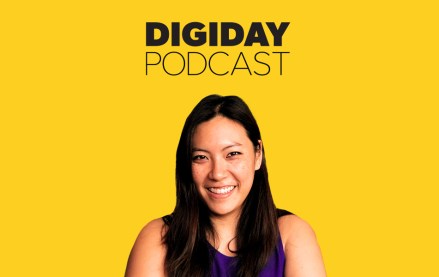Join us Dec. 1-3 to connect with leaders from CMI Media Group, Publicis Media, Ogilvy and many more

The New York Times ran an incredible native ad in June for Netflix’s “Orange is the New Black” that was so compelling in its writing and slick in presentation, it even had skeptical journalists praising it. Netflix ran a similarly elaborate ad campaign on Wired the month before. Both had very different messages — the Times post examined women in prison while Wired’s looked at how TV viewing is changing — and different costs and objectives.
Ad measurement company Nudge evaluated both ads on their performance on mobile, engagement and the effects of paid distribution. With the caveat that Nudge was limited to using public data and couldn’t measure total audience on the site, read on to see which ad fared better.
Shares
Here, the overall advantage went to Wired. The ad on the Condé Nast title got 130,955 shares to the Times’s 6,710. Nearly all of the Wired shares came from StumbleUpon, though, so the sharing took place across a narrower base of consumers. Subtracting StumbleUpon, the Times had more shares. Possible explanation: People actively recommend content when they think it will enhance their social status or promote a cause, and the Times post had a strong emotional message.
LinkedIn
The Times post had 2.5 times as many shares on LinkedIn as Wired’s. This was likely due to intense industry chatter about the native ad, because the Times had only recently started running native ads and only just starting to produce them in-house.
Attention minutes
Beyond sharing, the amount of time people actually spend on an article is a strong indicator of the value they place on it. Nudge didn’t have direct access to the sites’ data on time spent on the ads, so it bought sponsored posts on Twitter to get traffic toward the two pieces of content and then looked at how people viewed the ad. The advantage went to the Times ad, which people spent on average 3.21 attention minutes (defined as active time on the page) versus 1.2 for the Wired ad.
Earned impressions
The ads delivered similar results, but the Wired ad won by a nose with 152,311 estimated earned impressions to the Times’s 145,318.
The verdict
The Times ad got more industry chatter, but Wired’s saw more overall shares. Given the size advantage of the Times (16.9 million monthly uniques to 1.5 million for Wired, according to Quantcast), it could easily be interpreted that the Wired ad delivering a greater return. On the other hand, the Times performed best in those highly desirable attention minutes and had a more diverse base of shares.
More in Media

The rise of the creator conglomerate
As creators like Dhar Mann and MrBeast reach new heights in terms of both following and investor interest, today’s creator media companies are evolving into something much larger. They’re rapidly expanding into new business units beyond content production — and hiring experienced executives to lead the charge.

A day in the life of Stephanie Wu: How Eater’s EIC uses Slack reminders, a color-coded calendar and Google Docs to stay atop her to-do list
Wu joined the Digiday Podcast for the latest installment of the show’s “Day in the Life” series, in which members of the media and marketing industries share their systems and tips for getting through the average work day.

Watch every session from the Digiday Publishing Summit, Fall 2025
Full video recordings of every session from the latest Digiday Publishing Summit are available exclusively for Digiday+ members.





